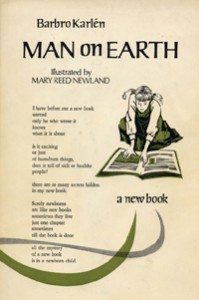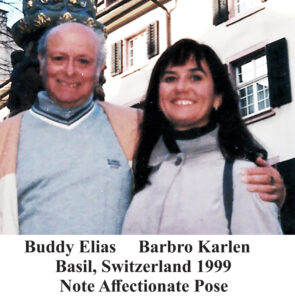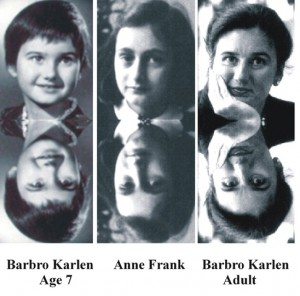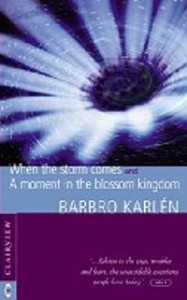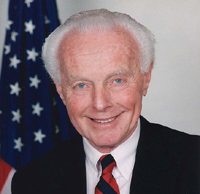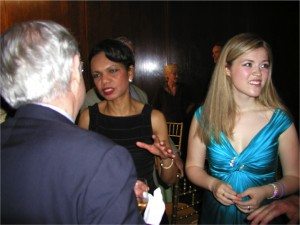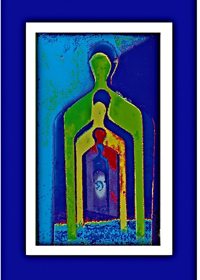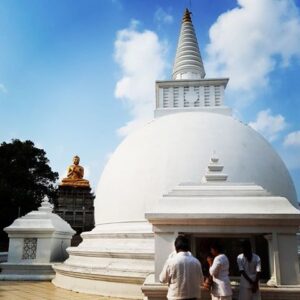 How Cases Derived: Past Life Memories in Childhood
How Cases Derived: Past Life Memories in Childhood
Researcher: Ian Stevenson, MD
From: Reincarnation and Biology: A Contribution to the Etiology of Birthmarks and Birth Defects, by Ian Stevenson, MD
Article by: Walter Semkiw, MD, from Born Again
The Early Life of Sammy Fernando
B. Selvin Fernando, who would be known by his nickname, Sammy, was born on January 3, 1919 in Gorankana, Sri Lanka. Gorankana is 10 miles or 17 kilometers south of Colombo, the capital city of Sri Lanka. Gorankana Sammy was another name Selvin was known by.
Sammy’s father was B. Jamis Fernando, who had a defect of his right eye, in which the lens was opaque. His mother’s name was W. Lucia Silva. Sammy had a younger brother named Milton, who later in life had the misfortune of falling from a train. Milton incurred a serious injury to his back and had to be placed in a cast. After the cast was removed, Milton walked with limp and had to use a cane. The family lived in the Gorakawatte section of Gorakana. (1)
As a youngster, Sammy spent much time in a Buddhist temple that was called Kale Pansala, which means “Forest Temple.” It was only 100 meters or yards from his home. There were two monks at this temple, with whom Sammy became acquainted with. One of these monks was named Amitha. As a young adult, Sammy would contribute generously to this temple.
Later in life, Sammy embarked on a pilgrimage to Adam’s Peak, a tall mountain in Sri Lanka. Folklore has it that the Buddha himself stayed on this peak.
Sammy attended an elementary school called Kabal Iskole, which means “dilapidated school” in English. (2)
Sammy Dances, Sings and Plays Instruments at the Family’s Dance Hall
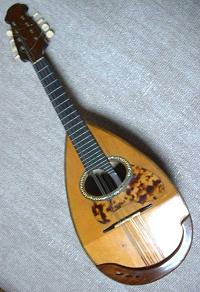 Sammy possessed natural talents for singing, playing musical instruments and dancing. He learned to play the Japanese mandolin and when he grew older, he became proficient at playing a drum called the rabana, as well as a larger drum that was about a yard or meter long.
Sammy possessed natural talents for singing, playing musical instruments and dancing. He learned to play the Japanese mandolin and when he grew older, he became proficient at playing a drum called the rabana, as well as a larger drum that was about a yard or meter long.
Jamis, Sammy’s father, had a special structure built on the family’s property designed for dancing and music, where Sammy would demonstrate his skills. The structure had a roof and an open frame, so festivities had the ambiance of the outdoors, but was protected from the rain. (3)
Sammy works for the Railroad and Falls in Love with Maggie Alwis
In adulthood, Sammy was first employed by a bus company and later by the government railways, where he worked in engines.
Sammy fell in love with an older, beautiful woman named Maggilin Alwis, though Sammy called her Maggie or Maggio. The couple eventually married and Sammy moved into the house owned by Maggie. The house was on the main highway between Colombo and another city called Galle. The road was a major thoroughfare and commercial trucks traversed it, often at high speed. The property owned by Maggie, and now Sammy, extended to a nearby river. The couple eventually had a daughter, who was named Nandanie.
During the early period of their relationship, Sammy’s desire to be with Maggie was so great that he often missed work to be with her. His absences became so frequent, that he was fired from his railway job when he was 25 years of age. (4)
Sammy becomes a Distiller and Bootlegger
 After being terminated from the railway, Sammy had few options for employment. He solved this problem by becoming a self-employed distiller of arrack, an alcoholic drink consumed in Sri Lanka. Sammy became very good at his craft and his arrack was in high demand.
After being terminated from the railway, Sammy had few options for employment. He solved this problem by becoming a self-employed distiller of arrack, an alcoholic drink consumed in Sri Lanka. Sammy became very good at his craft and his arrack was in high demand.
Unfortunately for Sammy, the production of arrack at the time was a government monopoly and it was illegal for others to distill it. As such, Sammy kept his still in the jungle behind his home. He distributed the liquor he produced by boat, traveling by the river that was adjacent to their property. Sammy built a dock for his boat on their land.
Sammy Spends Time in Prison, Carries a Dagger, Wears Brass Knuckles & Builds a Secret Path
Still, police periodically raided Sammy’s operation and would arrest him. The police would wait in the front of his house until Sammy came home, at which time he would be taken into custody. He was imprisoned at least 8 times. To evade authorities, Sammy cut a trail in the jungle so that he could access his house from the rear. This way he would not have to enter by the front door, which was adjacent to the road between Colombo and Galle.
Bootlegging, as it is called in the United States, is not for the faint hearted, and Sammy’s personality was right for the profession. He was known to be fearless, possessed a long dagger and brass knuckles, also known as knucklebusters, which is a metal weapon worn on the hand to make punches more lethal. (5)
Sammy’s Alcoholism
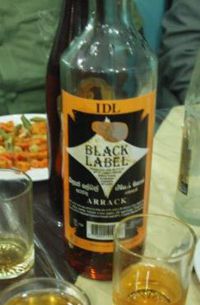 In addition to being a skilled producer of arrack, Sammy was a very avid consumer of the drink; so much so that Ian Stevenson assessed that Sammy’s consumption warranted the diagnosis of alcoholism. When Sammy went on his boat trips to sell arrack, he often took no food, finding that arrack satisfied his nutritional needs.
In addition to being a skilled producer of arrack, Sammy was a very avid consumer of the drink; so much so that Ian Stevenson assessed that Sammy’s consumption warranted the diagnosis of alcoholism. When Sammy went on his boat trips to sell arrack, he often took no food, finding that arrack satisfied his nutritional needs.
A favorite drinking venue of his was a tavern at a place called Moratua. Sammy would take his brother-in-law, Martin Alwis, as well as another drinking buddy, Wimalasdasa de Alwis, to the Moratua tavern.
When he was at home, Sammy would drink in his favorite chair and assume a posture with his legs drawn up, similar to the lotus position used by those who meditate.
Sammy’s Taste for Cigarettes and Terrylene Shirts
Like many consumers of alcohol, Sammy was also a smoker and his favorite cigarette brands where Four Aces and Three Roses, which were more expensive than lesser quality cigarettes available in Sri Lanka. Sammy was also particular about his clothing and preferred to wear expensive shirts made of synthetic fiber called Terrylene.
With these shirts, he would don a sarong, a skirt-like piece of apparel that men in Sri Lanka wear. Sammy would tie the top ends of the sarong into a knot that would protrude up above the sarong, just below the navel or belly button. Sammy would keep money in this knot. (6)
Sammy’s Temper and Assaults on Maggie
As often occurs, Sammy’s tendency to be violent was enhanced when he drank arrack. As one of Sammy’s friends observed, “He had a bad temper when drunk and he was invariably drunk.” (7)
A frequent target for Sammy’s anger was Maggie. When he was in a drunken state, he would start an argument and curse vociferously, using a broad spectrum of swear words. Maggie adopted the strategy of leaving the house and walking away down the Colombo-Galle road.
To add to her woes, Sammy acquired a mistress, with whom he had an illegitimate son, who was named Sunil Fernando. Sammy did not show much affection to his daughter, Nandanie, nor did he give his daughter money.
Kusuma gives Sammy Refuge
In contrast, Sammy was very generous to his favorite niece, Kusuma Dabare, who was the daughter of Sammy’s younger sister. Kusuma lived with Sammy’s parents, Jamis and Lucia, at their home in the Gorakawatte section of Gorakana.
After an episode of drinking, Sammy would go to his parent’s house and ask Kusuma to cook for him and she obliged him by preparing hot meals for him. This pattern occurred 3 times a week. In gratitude, Sammy gave money to Kusuma liberally. Sammy also had the tendency to give money to children, the poor and as mentioned, the Kale Pansala temple. (8)
The Death of Gorakana Sammy
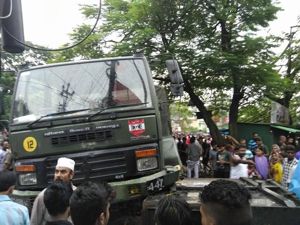 Sammy’s demise occurred on January 29, 1969. He was drunk and started an argument with Maggie. Her brother, Martin Alwis, was present. As usual, Maggie escaped from Sammy by leaving the house and walking away down the Colombo-Galle road. Sammy followed her, with Martin in tow. Sammy stopped in a shop with Martin to purchase cigarettes.
Sammy’s demise occurred on January 29, 1969. He was drunk and started an argument with Maggie. Her brother, Martin Alwis, was present. As usual, Maggie escaped from Sammy by leaving the house and walking away down the Colombo-Galle road. Sammy followed her, with Martin in tow. Sammy stopped in a shop with Martin to purchase cigarettes.
As Martin was making his purchase, in his drunken state, Sammy walked out of the shop and onto the road, where a truck struck him. Martin heard the sound of he vehicle crashing into Sammy, exited the shop and found him on the roadway sprawled on his back. Sammy died shortly thereafter at 50 years of age.
Despite his faults, the poor remembered Sammy’s generosity, so much so that they raised enough money to pay the complete cost of his funeral. In fact, Sammy gave away so much money that the only possessions he still had at the time of his death were a ring, a belt and his brass knuckles. (9)
Sammy is Reincarnated Six Months Later
Sujith Lakmal Jayaratne was born on August 8, 1969, a little over six months after Sammy died. His parents lived in Mount Lavinia, which is 3 miles or 5 kilometers south of Colombo. Gorankana, the village where Sammy lived, is another 7 miles or 12 kilometers further south from Mount Lavinia. (10)
Sujith’s Past Life Memories Include Working for the Railroad and Milton’s Fall
 Before acquiring much of a vocabulary, Sujith tried to express memories of a prior incarnation. He would use gestures and sounds to try to communicate. When he was asked what he did in the prior lifetime, he made sounds that imitated a steam locomotive engine.
Before acquiring much of a vocabulary, Sujith tried to express memories of a prior incarnation. He would use gestures and sounds to try to communicate. When he was asked what he did in the prior lifetime, he made sounds that imitated a steam locomotive engine.
When his speech became more developed, he said that he had worked in the engines of trains and that he was fired from his railroad job. Ian Stevenson was impressed that Sujith recalled being terminated from the railroad, which occurred when Sammy was 25 years of age, which meant that almost 55 years had transpired when Sujith reported this event. (11)
Also, before he learned to talk, he tried to express that someone had fallen and became lame by imitating a person limping and using a cane. Later, when Sujith was able to converse, he told his mother that the person who fell and limped as a result was his brother in the prior lifetime, whose name was Milton, which was accurate regarding Milton Fernando. (12)
Sujith’s Past Life Memories of Being Gorakana Sammy
As a child, Sujith said that his name was Sammy and that he was from Gorakana. He said he was called “Gorakana Sammy.” Sujith frequently referred his father, who he said was named Jamis and who had a bad right eye. He had a tendency to speak in the present tense. For example, Sujith said, “Jamis is at Gorakana,” whereas in reality, Jamis had died in September 1970. He repeatedly asked to be taken to Gorakana. He made the statement, “This is not my home and I wish to be taken to Gorakana.” (13)
Sujith later said that he lived in the Gorakawatte section of Gorakana, which is where Jamis and his family lived and where Sammy grew up. Ian Stevenson was especially impressed at Sujith’s knowledge of the term Gorakawatte, as it was an old term for the area that had not been used for several decades. In the years before Sujith’s birth, a new name, Ampityawatte, was used for the neighborhood. (14)
Past Life Memories: Sujith remembers the Dilapidated Schoolhouse and Forest Temple
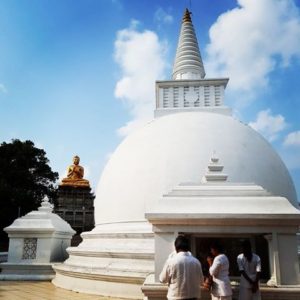 Sujith said that he went to school at Kable Iskole, which means the “dilapidated school,” and that his teacher was named Francis. Sammy did indeed go to this run down elementary school and his teacher was indeed named Francis. (15)
Sujith said that he went to school at Kable Iskole, which means the “dilapidated school,” and that his teacher was named Francis. Sammy did indeed go to this run down elementary school and his teacher was indeed named Francis. (15)
Sujith said that he used to go Kale Pansala, translated as the “Forest Temple,” that two monks lived there and that he used to give money to this temple. He said one of the monks was named Amitha. Sammy did contribute to this temple, which was only 100 meters from his childhood home, and Sammy knew the monk Amitha.
Ian Stevenson was also impressed that Sujith knew the term Kale Pansala. When Sujith made these statements, the term Kale Pansala had not been used for several decades. Though Kale Pansala was present during Sammy’s early years, the temple was moved to a different location and was called by a completely different name, Dharmarakshitaramaya.
Again, Ian Stevenson was impressed how far back in Sammy’s lifetime Sujith could access memories. (16)
Sujith’s Past Life Phobia of Trucks
 From an early age, Sujith had a marked fear or phobia of trucks. The family didn’t understand why he had this fear. Then one night, Sujith woke up from sleep and he ran around the house waking up everyone in his family. He then informed them:
From an early age, Sujith had a marked fear or phobia of trucks. The family didn’t understand why he had this fear. Then one night, Sujith woke up from sleep and he ran around the house waking up everyone in his family. He then informed them:
“Do you know that I was run over by a lorry and that is how I died?”
Since the English colonized Sri Lanka, the British term for truck is used by Sri Lankans, which is “lorry.” After waking up everyone to announce the cause of his death in his prior incarnation, Sujith went back to sleep.
On another occasion, he woke the family up again and said he wanted to go to Gorakana, then went back to sleep. (17)
Past Life Behavior: In a Teetotaler Family, as a Child, Sujith asks for Arrack and Pretends he is Drunk
 Since no one in his family drank alcohol, they were shocked when Sujith, as a child, asked for arrack.
Since no one in his family drank alcohol, they were shocked when Sujith, as a child, asked for arrack.
Subsequently, Sujith asked for arrack frequently. When he realized that his family would not comply with his requests, he would go to his neighbors to ask for arrack. One of them finally complied, but stopped giving arrack to the child when Sujith’s grandmother objected and chastised the neighbor.
At times, when he was given a soda to drink, Sujith would pretend that the beverage would make him drunk. He would weave around as if he was intoxicated and fall on the floor and say “bila,” which means, “having drunk.”
He would also assume Sammy’s drinking posture, in that he would sit in a chair with his legs drawn up. After taking a sip of the soda, he would make a sound with his throat that arrack drinkers make. He would then wipe his mouth, as if he was removing traces of an irritating, strong alcoholic drink from his lips, again, a behavior typical of arrack drinkers.
At other times, Sujith would just fall to the ground and say, “I am drunk,” even without the soda. (18)
Sujith remembers being a Bootlegger in a Past Life
Sujith told his family that he also sold arrack. He said that once he filled a boat with arrack and that the boat sank. This incident occurred 8 years before Sammy’s death.
He also recalled that he could access his house via a jungle path. (19)
Past Life Behavior: Sujith asks for Four Aces and Bums a Cigarette
As no one in the family smoked, they were also surprised when Sujith, as a 4 year old, asked them to get Four Aces cigarettes for him, which was one of the brands that Sammy smoked. Again, they would not comply. Still, Sujith tried to smoke and he once bummed a cigarette from a visitor and then asked his mother for a light. (20)
Past Life Emotions: Sujith recalls his Fights with Maggie and Affection for Kusuma
Sujith told his family that he had a wife named Maggie that he fought with. When they asked why he fought with Maggie, Sujith replied it was because he was drunk. He said that he had a daughter named Nandanie and a niece named Kusuma, who was his younger sister’s daughter, who had very long and thick hair.
He said that Kusuma was in Gorakana and that he gave money to her. Sujith said that Kusuma made a hot meal for him called “string hoppers,” which is a type of noodle dish. All these statements were accurate regarding Sammy’s wife and niece. (21)
Later, Sujith said, “When I start earning I will give… to Kusuma,” showing his intent to replicate their relationship. (22)
Sujith Remembers Details of his Past Life Death
Sujith said that after he had an argument with Maggie, he went to a shop to get cigarettes, then stepped out on the road and was killed when a truck struck him. Sujith would even imitate the posture that he was in on the road after being struck. He would lay on the ground, on his back, with one arm stuck out. This was the posture that Sammy was in after being hit by the truck, as observed by his brother in law, Martin. (23)
Wattarappola, a Buddhist Monk, Investigates Sujith’s Past life Memories
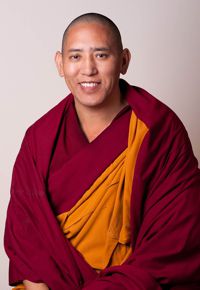 The family came to believe that Sujith had a past incarnation in Gorakana, but they didn’t know anyone in that village to approach. The family had a relative, Wattarappola Nadaratana, who was a monk. When he heard about Sujith’s remarks alluding to a past lifetime, he documented these statements and decided to investigate.
The family came to believe that Sujith had a past incarnation in Gorakana, but they didn’t know anyone in that village to approach. The family had a relative, Wattarappola Nadaratana, who was a monk. When he heard about Sujith’s remarks alluding to a past lifetime, he documented these statements and decided to investigate.
Wattarappola went to Gorakana to make inquiries. There he met Kusuma Dabare, Sammy’s favorite niece, on March 13, 1972, and he told her about Sujith’s statements. At first, she did not know what to make of the situation, but she went home and consulted with her family about Sujith’s past life memories. (24)
Kusama and other Relatives Visit Sujith
Kusuma traveled to Mt. Lavinia two days later, on March 15, 1972, and sought out Wattarappola, who said it was premature to meet Sujith. Instead, he said he would return to Gorakana and meet with Sammy’s family. He did so and confirmed that Sujith’s statements were accurate regarding the lifetime of Sammy Fernando.
News spread through the Fernando family and Kusuma and 10 others from Gorakana arrived at Sujith’s home on March 30, 1972. The sight of such a large party frightened Sujith. He held onto his mother and said nothing.
She returned the next day with only 4 others. Sujith recognized her and called Kusuma by name. Sujith also recognized one of the other visitors, Sammy’s nephew, and called him by his name, Kithsiri. (25)
On another occasion, a distant relative of Sammy Fernando named Princie came to Sujith’s home and stood in front of the house. Though a large crowd was present along with her, Sujith recognized her and said, “Come in. Come in.” He correctly said, “You are Princie.” (26)
Maggie Visits Sujith, her Past Life Husband
Maggie, Sammy’s widow, came to visit Sujith in Mount Lavinia. Wattarappola, who was convinced that Sujith’s family did not know who she was at the time of their first meeting, documented the scene. His narrative of events follows:
“On April 3, 1972, Maggilin Alwis called on the child’s house accompanied by a couple of other ladies of the same age group. For about 20 minutes, the child did not speak. Thereafter he suddenly called out ‘Maggie’ to one lady and said: ‘Maggie is going down the road.’
We enquired from the lady whether she was named correctly. She said her late husband always called her Maggie, and that when he came home drunk and picked a quarrel with her, she always walked down the road.
After this the child ran inside the house. During his absence I got all the visitors into a room unseen by the child and I myself remained on the veranda. The child came out after a few minutes and very excitedly started calling out:
‘Where is Maggilin? Where is Maggilin? Went to Gorakana. Went to Gorakana.’
He started running about in the house and dashed into the room where the ladies were.
‘I love you Maggie, I love you Maggie,’ he said to Maggilin.
The lady started crying and embraced the child lovingly. The child said:
‘Look what you did to me. Look what you did to me.’
We inquired of her what this meant. She explained that on the day Sammy Fernando met his death, he came home roaring drunk and started to quarrel with her. She fled down the road and he started chasing her and was knocked down by a lorry.
Later when the party, along with Maggalin, were leaving [to return] Gorakana, the child became restive and wanted to go along with them.” (27)
Sujith Recognizes his Past Life Drinking Buddies
Other of Sammy’s friends and family came to visit Sujith at Mount Lavinia. Sujith seemed to remember which of these individuals used to drink arrack with Sammy and which did not. He only invited Sammy’s drinking cohorts to have arrack.
When Martin, Sammy’s brother-in- law, came to Mount Lavinia, Sujith suggested that they go to the tavern at Moratuwa , where Martin and Sammy used to go. When another of Sammy’s drinking companions, Wimalasdasa de Alwis, came to visit him, little Sujith addressed the middle-aged man like a familiar old friend, and asked him for arrack. (28)
Sujith is taken to his Past Life Home
 On April 29, 1973, Wattarappola took Sujith to Gorakana. When taken to the Jamis’s house, where Sammy grew up, Sujith went all over the house looking for Jamis. When Sujith couldn’t find him, he made the statement, “My father Jamis is not here.” It was at this time that Sujith first learned that Jamis had died. (29)
On April 29, 1973, Wattarappola took Sujith to Gorakana. When taken to the Jamis’s house, where Sammy grew up, Sujith went all over the house looking for Jamis. When Sujith couldn’t find him, he made the statement, “My father Jamis is not here.” It was at this time that Sujith first learned that Jamis had died. (29)
Sujith also recognized the open-air structure on the property and correctly stated that it was used for dancing. At the property, Sujith asked for Sammy’s drum. When it was brought out, since it was too large for Sujith to hold (it was a meter long), he sat on it and banged on one end. (30)
Sujith also recognized Sammy’s ring, belt and brass knuckles. Sujith wanted to keep these articles and bring them back to Mount Lavinia, and was annoyed when he was not allowed to do so. (31)
Past Life Behavior: Similarities in Sammy’s and Sujith’s Preferences in Regards to Food and Clothing
There were similarities in tastes between Sammy and Sujith. In terms of food, both liked spicy dishes, such as hot curries. Another distinctive shared trait shared involves Sujith’s request for expensive Terrylene shirts. Ian Stevenson even saw Sujith wearing such a shirt. (32)
Most men who wear sarongs in Sri Lanka tie the top of the sarong above the navel. In contrast, both Sammy and Sujith positioned the top of a sarong below the belly button and they both formed a large knot with the sarong material on the top of the garment. When Sujith was asked why he made such a knot, he explained that the knot is where he would keep money, a habit that Sammy also had. (33)
Sujith’s Phobias from a Past Lifetime
 Sujith had fears related to his past lifetime as Sammy. When he was only 8 months of age, his mother realized that Sujith had a fearful response to just the word “lorry.” She exploited this fear by saying “lorry” if Sujith wouldn’t drink his milk. “Lorry” would intimidate him into submission. (34)
Sujith had fears related to his past lifetime as Sammy. When he was only 8 months of age, his mother realized that Sujith had a fearful response to just the word “lorry.” She exploited this fear by saying “lorry” if Sujith wouldn’t drink his milk. “Lorry” would intimidate him into submission. (34)
As mentioned, Sujith often wanted to be taken to Gorakana. If asked if he would go there by truck, he refused, When offered to be taken to Gorakana by car, he would accept. Wattarappola noted that Sujith was “mortally afraid of lorries.” (35)
Sujith was also afraid of policemen. His aunt noticed that if he saw policemen, he would go inside the house. He later would ask his aunt if the police had passed by, which would mean that he was safe. (36)
Past Life Behavior: Sujith has Sammy’s Tendency to be Violent
Sammy was perceived as fearless and Sujith demonstrated a total lack of inhibition. Both had a tendency towards being violent.
Ian Stevenson witnessed Sujith kick one of the neighbors with “great zeal and persistence,” and he also saw Sujith hit another individual, who was minding his own business, with a fist. Stevenson also saw Sujith spit on his grandmother.
Wattarappola said he had seen Sujith push his mother into a corner and then pummel her, saying this is how the police assault. Sujith’s aunt said that when scolded, Sujith would sometimes threaten to stab the offender with a knife.
Despite these aggressive traits, Sujith also demonstrated generosity, much like Sammy. (37)
Sujith has Sexual Feelings for Maggie, his Past Life Wife, then Wounds Her, Like Sammy
Another parallel occurred in relation to Maggie. In July 1973, when Sujith was almost 4 years old, he announced that he was going to go to Maggie’s house and not return. He said he would sleep at Maggie’s house, and the family got the impression that his intention was not just to sleep.
After Maggie met Sujith, she became fond of him and visited Sujith in Mount Lavinia quite often. After a period of time, she discontinued her visits, explaining that Sujith had become rude.
In contrast, when Kusuma Dabare was to be married, she invited Sujith and his family to her wedding. Recall that when Sammy got drunk, fought with Maggie and left their house, he would seek refuge at his parent’s home, where Kusume would cook hot meals for him. (38)
Xenoglossy: Expletives from a Past Lifetime
Sujith’s family was very proper. As such, they were very surprised to find that Sujith had an extensive vocabulary of obscene words. Sammy had a habit of swearing and shouting obscenities when drunk.
Ian Stevenson went so far as positing that this could be equated to xenoglossy, in which an individual knows a foreign language that was not learned in the contemporary lifetime. Stevenson reasoned that Sujith’s extensive vocabulary of expletives could not have been learned at home, given the respectable character of his mother and grandmother. Sujith’s father had left the family soon after Sujith was born, so there were no others who could have taught the toddler these expletives. (39)
Reincarnation & Similar Appearance Across Lifetimes
A similarity in physical appearance was noted between Sammy and Sujith. Even the way they walked, their gait, was the same. (40)
A Christian Relative believes Sujith is the Reincarnation of Sammy and Sujith gives Sammy’s Son Goosebumps
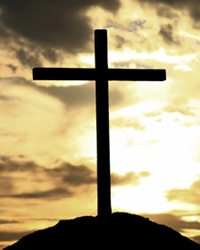 Though both Sammy’s and Sujith’s families were Buddhists, Sammy’s son in law, Sri Nimal Rodrigo, was Christian. He stated:
Though both Sammy’s and Sujith’s families were Buddhists, Sammy’s son in law, Sri Nimal Rodrigo, was Christian. He stated:
“I am a Roman Catholic and do not believe in rebirth, but from what I saw of Sujith and his recognitions I am convinced that he is Sammy reborn.” (41)
Another episode that demonstrates the power of Sujith’s recognitions involves Sunil Fernando, Sammy’s illegitimate son. Sunil came to meet Sujith at Mount Lavinia. Sunil was a complete stranger to Sujith’s family and he did not introduce himself to anyone. Sujith recognized him and said, “Come here, Sunil.”
Sunil said that Sujith’s recognition of him gave him “a terrible shock,” as well as gooseflesh. (42)
Sujith’s Later Development and Past Life Drinking Behavior
As Sujith surpassed 6 years of age, he no longer talked about his previous life as Sammy, he no longer used obscenities and he became less violent. Still, when he saw people drinking arrack, he would propose that he should have some himself. (43)
Understanding Past Lives & Principles of Reincarnation
Physical Resemblance from one lifetime to another: It was noted that there exists a similarity in physical appearance between Sammy and Sujith, as well as in their gaits.
Relationships Renewed through Reincarnation: Sammy was reborn as Sujith in Mount Lavinia, which is 5 miles or 7 kilometers from Gorankana, the town where Sammy had lived. After Sujith shared his past life memories, his family was able to find Sujith’s past life family and he was reunited with Sammy’s family, his past life wife and past life drinking companions.
Phobia from a Past Lifetime: Sujith had a severe phobia of trucks and even as an 8 month old infant demonstrated a marked fear of the word “lorry,” which is explained by the fact that Sammy was killed by a truck. Sujith also had an aversion to policemen due to his being incarcerated, as Sammy, multiple times.
Xenoglossy: Ian Stevenson felt that Sujith’s extensive vocabulary of expletives or cuss words qualified for xenoglossy, as there was not way that Sujith learned this language from the two very proper women who raised him.
Footnotes
1. Stevenson, Ian: Cases of the Reincarnation Type, Volume II, Sri Lanka, University Press of Virginia, Charlottesville, 1977, p. 242-243
2. Ibid., p. 248-249
3. Ibid., p. 245
4. Ibid., p. 243
5. Ibid., p. 243
6. Ibid., p. 244
7. Ibid., p. 244
8. Ibid., p. 244
9. Ibid., p. 244
10. Ibid., p. 279
11. Ibid., p. 252, 263
12. Ibid., p. 268
13. Ibid., p. 248, 267-269
14. Ibid., p. 248
15. Ibid., p. 248
16. Ibid., p. 251
17. Ibid., p. 267
18. Ibid., p. 271-272
19. Ibid., p. 267
20. Ibid., p. 271-272
21. Ibid., p. 250-251
22. Ibid., p. 269
23. Ibid., p. 252, 256
24. Ibid., p. 250-251
25. Ibid., p. 237
26. Ibid., p. 264
27. Ibid., p. 270-271
28. Ibid., p. 272
29. Ibid., p. 269
30. Ibid., p. 260
31. Ibid., p. 269
32. Ibid., p. 273
33. Ibid., p. 273
34. Ibid., p. 235
35. Ibid., p. 273
36. Ibid., p. 273
37. Ibid., p. 274
38. Ibid., p. 274, 278
39. Ibid., p. 235, 274
40. Ibid., p. 276
41. Ibid., p. 277
42. Ibid., p. 265
43. Ibid., p. 278

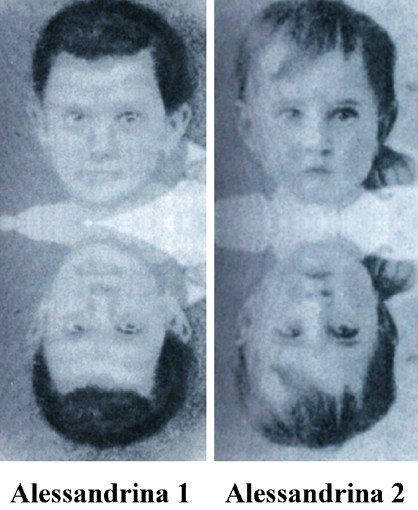




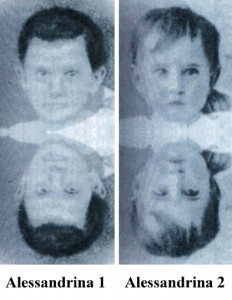
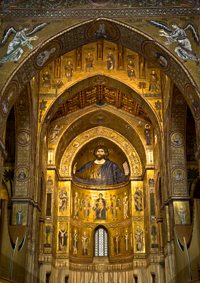
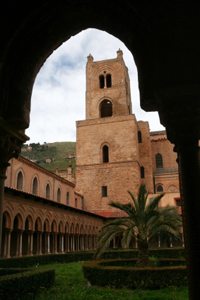
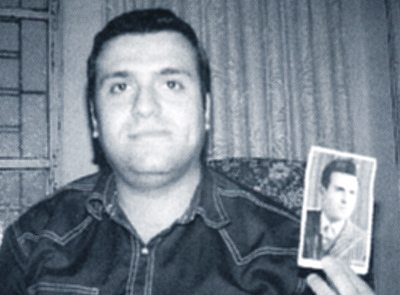
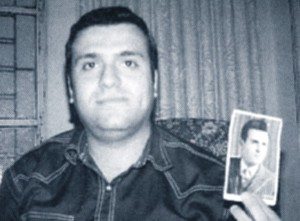


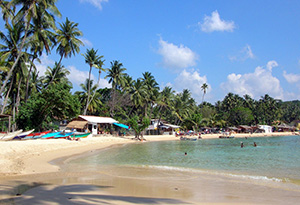




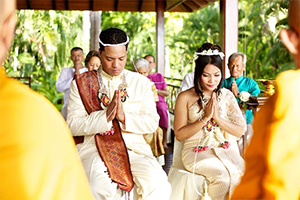
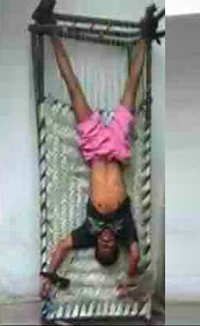

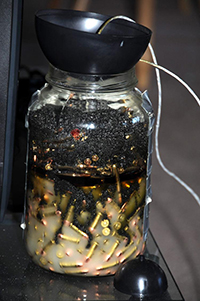


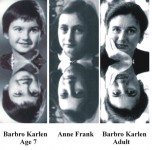
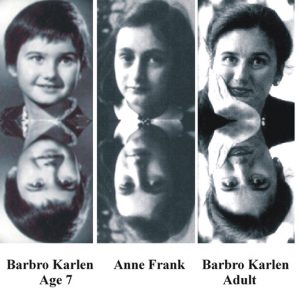


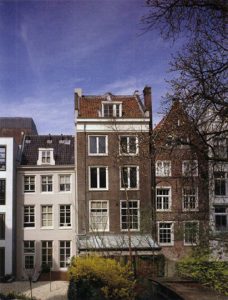
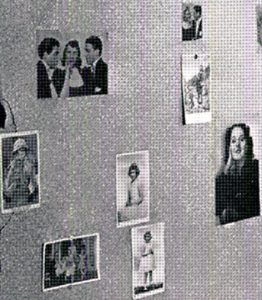
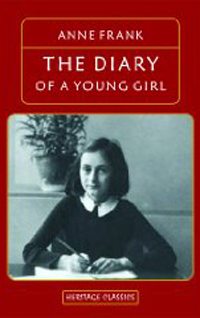 In time, Barbro’s mother responded by becoming very spiritual and a believer in reincarnation. Barbro’s father, on the other hand, seemed annoyed. Barbro relates that her father responded by saying: “I can’t deny that you have somehow been here before. Perhaps you have lived before and have reincarnated, but you are the only one!”
In time, Barbro’s mother responded by becoming very spiritual and a believer in reincarnation. Barbro’s father, on the other hand, seemed annoyed. Barbro relates that her father responded by saying: “I can’t deny that you have somehow been here before. Perhaps you have lived before and have reincarnated, but you are the only one!”